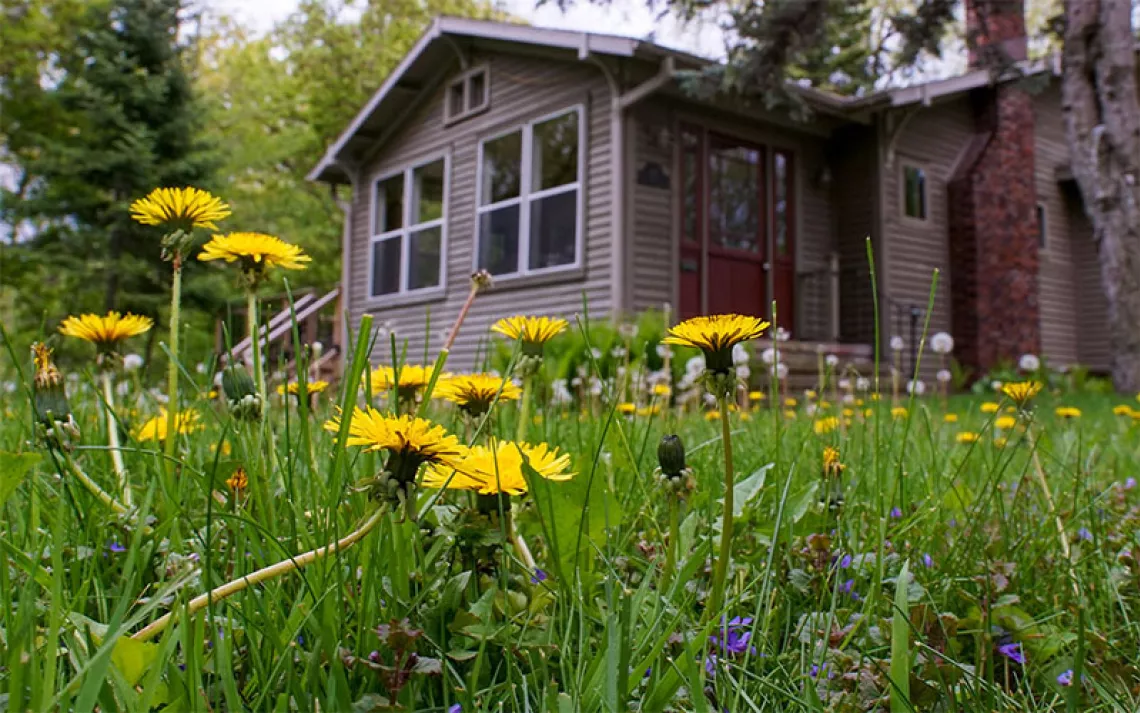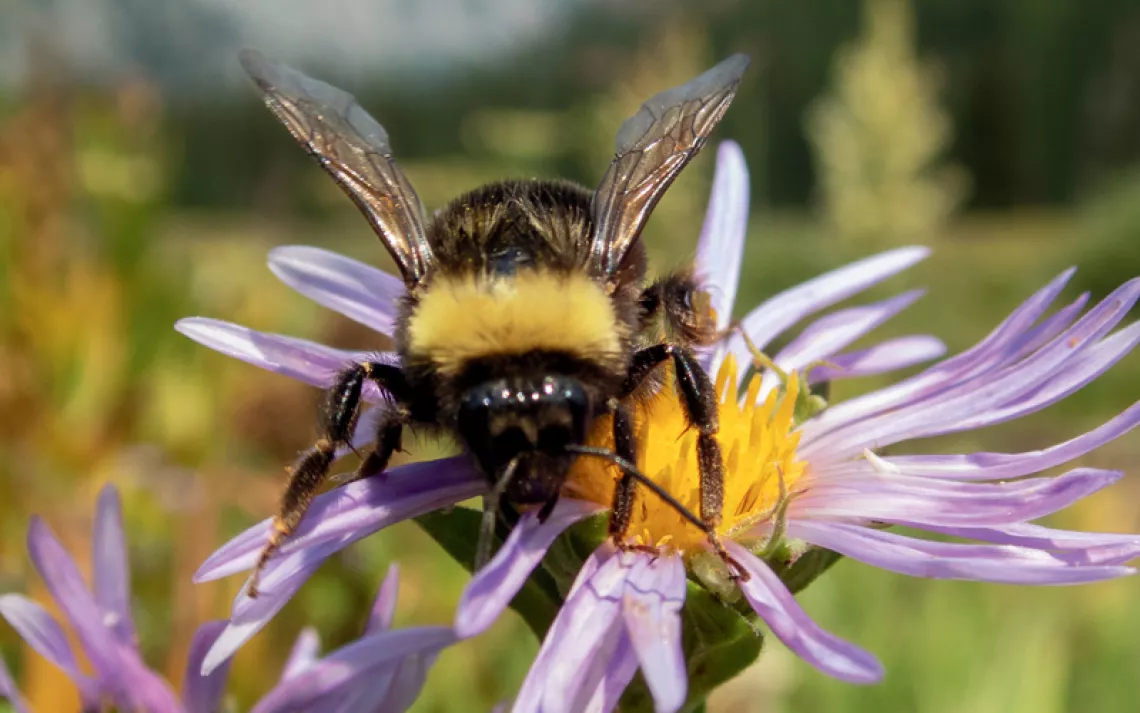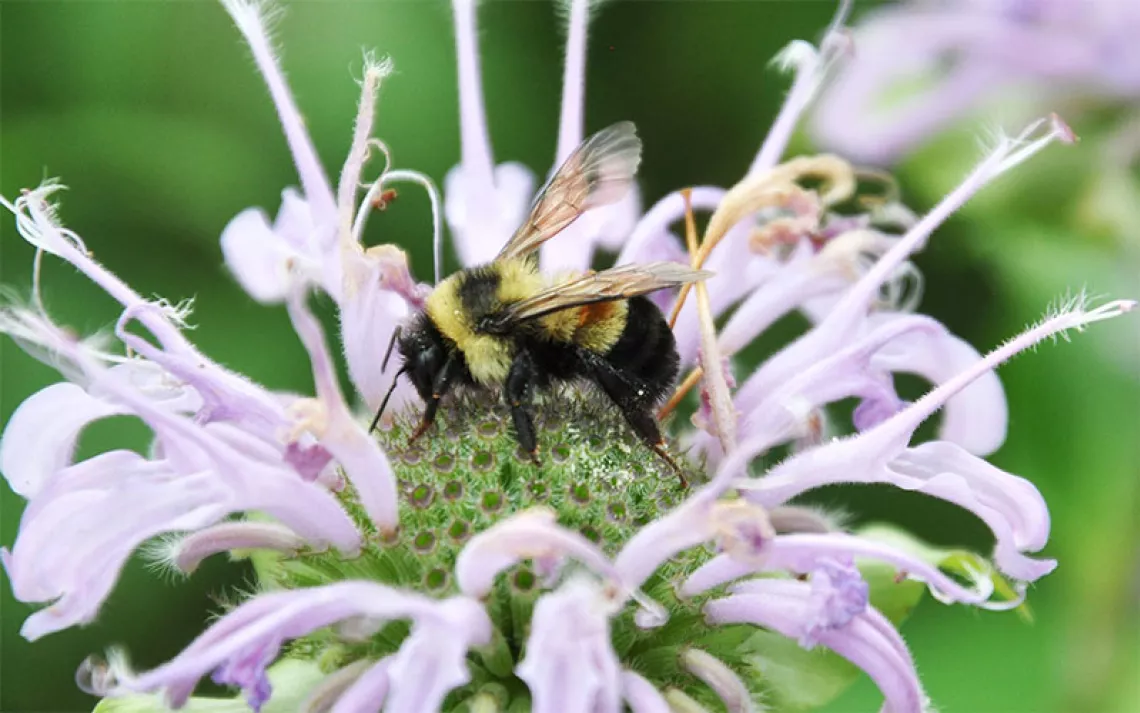Can Hobby Beekeepers and “Bee Evangelists” Save the Ecosystem?
September is National Honey Month
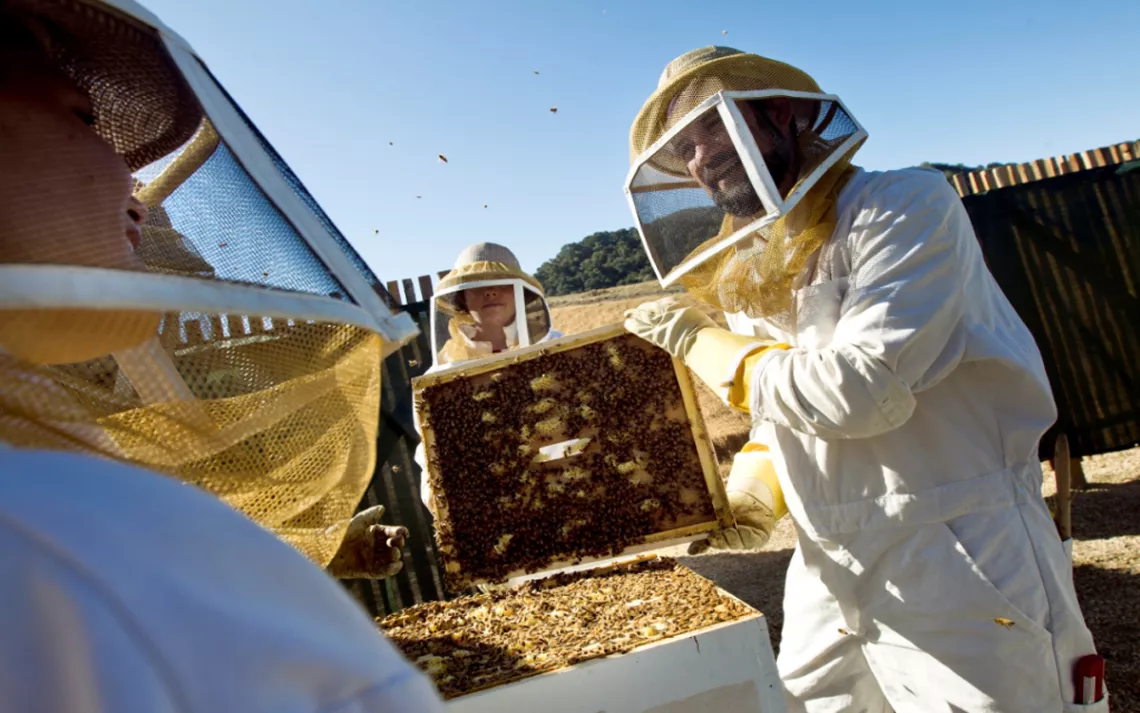
Beekeeper John Russo welcomes first-time beekeepers into an apiary at Central California's Carmel Valley Ranch.
|Photos courtesy of Carmel Valley Ranch
September typically marks the end of honey-collection season, which is why the USDA in 1989 deemed it National Honey Month. The designation serves partially to highlight honey as a natural and healthful sweetener, but moreover, to promote American beekeepers as increasingly crucial stewards of the earth. Honeybees are under threat worldwide, due to parasites, increases in virulent diseases, pesticides, and habit degradation—all of which contribute to Colony Collapse Disorder. First identified in 2006, Colony Collapse causes worker bees to suddenly abandon their hives, leaving the queen and her babies without the nectar and pollen they need to survive. The situation has gotten so dire that nearly all colonies of wild honeybees have died out in the U.S., meaning that without beekeepers to care for them, these sweet creatures could within a few years disappear altogether.
Considering honeybees are the globe’s most prolific pollinators—responsible for an estimated one out of every three bites Americans take, and contributing billions of dollars worth of annual economic value to worldwide agriculture—the onus more than ever is on those who facilitate the pollination of produce, as well as the production of honey, beeswax, propolis, and royal jelly. Luckily, hobby beekeeping is on the rise throughout the United States. In recent years, major cities including New York City, Washington, D.C., and Los Angeles have lifted restrictions on the practice, and amateur beekeepers, of whom there are about 120,000 and counting according to Bee Culture magazine, have suited up and introduced hives to their backyards, roofs, and gardens. This is great news, as it could be contributing to the 3 percent rise in honeybee colonies in the U.S. in 2017.
Tending to the hardworking insects that have been pollinating Earth’s plants for about 25 million years can be fascinating, and reaping the fruits of hobby beekeeping labor, is, well, pretty sweet. So much so that beekeeping is increasingly powering the burgeoning niche industry that is “agri-tourism.”
At Tucson, Arizona’s tony Miraval Resort & Spa, for instance, guests can now join a staff beekeeper in an on-site apiary to learn more about how to “taste and savor the sensual notes of honey the way you would sip a fine wine.” Since 2008, Fairmont Hotels & Resorts has done its part to combat Colony Collapse by installing apiaries at more than 20 of its properties and providing guest education. For instance, from May through September, those staying at Vancouver, British Columbia’s Fairmont Waterfront Hotel can tour gardens and apiaries with a resident “bee butler,” and keep tabs on busy pollinators from an observation hive.
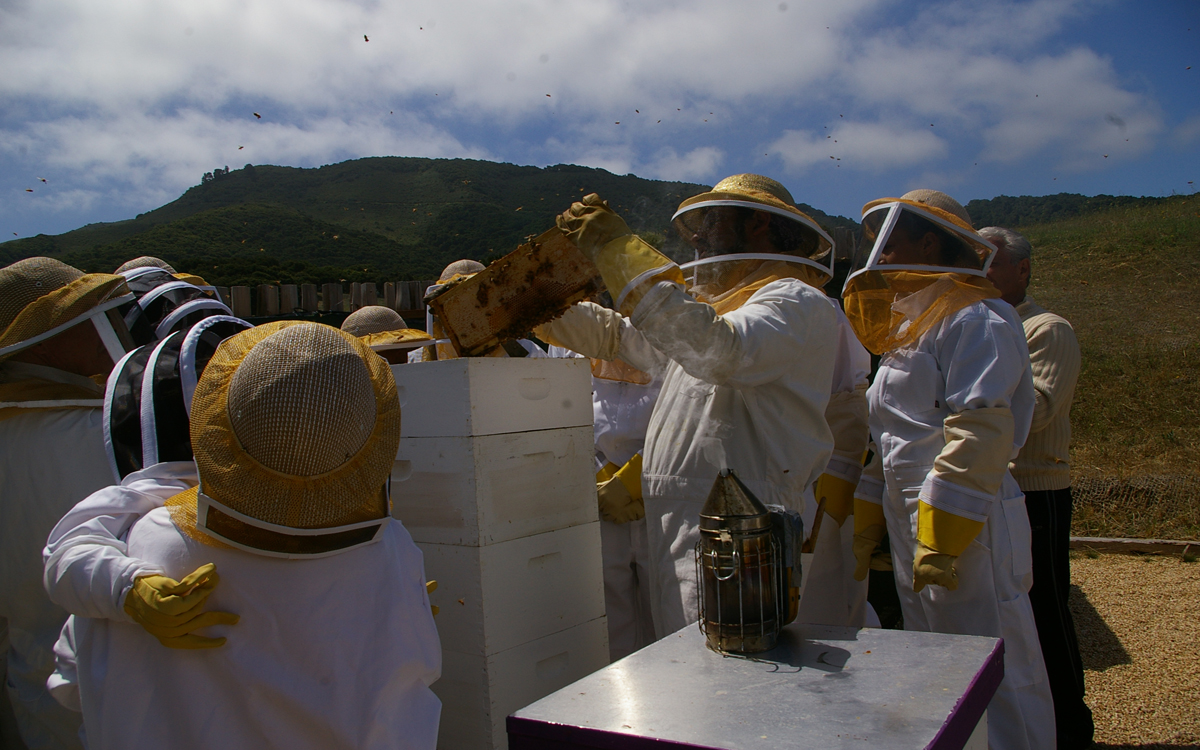 The most interactive experience, however, lies within the vibrant fields of lavender at Central California’s Carmel Valley Ranch. The laid-back yet luxurious coastal resort attracts beachgoers, hikers, spa fanatics, and epicureans in droves, but its most popular and signature offering would be the “A to Bee” Experience. This is a 90-minute tour that has some 3,000 guests each year donning bee suits and entering hives alongside real beekeepers to not only witness the mesmerizing intricacy of honeybees’ work, but also to help harvest honey, feed new colonies, inspect hives, and add or remove the chambers where bees store excess honey, called supers.
The most interactive experience, however, lies within the vibrant fields of lavender at Central California’s Carmel Valley Ranch. The laid-back yet luxurious coastal resort attracts beachgoers, hikers, spa fanatics, and epicureans in droves, but its most popular and signature offering would be the “A to Bee” Experience. This is a 90-minute tour that has some 3,000 guests each year donning bee suits and entering hives alongside real beekeepers to not only witness the mesmerizing intricacy of honeybees’ work, but also to help harvest honey, feed new colonies, inspect hives, and add or remove the chambers where bees store excess honey, called supers.
The A to Bee Experience draws parents seeking family vacations with an educative element, bee-phobes looking for exposure therapy, and resort guests curious to meet the source of their fancy honey-based cocktails and spa experiences. Interestingly, the tour’s creation was about as organic as the hundreds of gallons of honey that Carmel Valley Ranch harvests each year.
A to Bee founder John Russo, an area lavender farmer, was contracted in 2010 to tend to the 7,5000 lavender plants that perfume the purple property and to find ways to engage guests in its cultivation. “I was planting lavender one day when someone pulled over and started telling me how much he liked all the bees the lavender was attracting—they fly around and get nectar from the flowers,” says Russo. “So a couple weeks later, I set up some hives on a hillside, and I walked the owner up there and told him a little about bees, and he loved the fact that they were benefitting the immediate environment and the property’s overarching environmental operation.”
Soon thereafter, Russo found himself leading weekend walking lectures through the property’s lavender fields and into its new apiary. “I didn’t want to just make people sit through a presentation, but I was also leery about having everyone throw on suits and jump into the hives for some some thrill-type sensory overload experience,” he says. “Being in contact with the bees is really impactful, so I wanted everyone to develop a marvel and curiosity, and then have an emergent experience.”
A single hardworking honey bee only produces about a teaspoon of honey in its lifetime (which lasts four to six weeks), but Carmel Valley Ranch, known for its honey-heavy menus and gift shop, is home to 24 hives and 60,000 honeybees. It’s easy to see why the “bee bug” is so contagious here. On a recent 90-minute walking tour up to the apiary (which costs $75 per adult and $50 for children), assistant beekeeper Cait Ride pours everyone glasses of homemade lavender honey lemonade and, soon thereafter, provides a graphic description of how worker bees, all of whom are female, slurp up nectar from plants via their long tongues (the proboscis), and then come back to the hive to create honey by “throwing it all up” over their sisters, who store the expelled stomach content in honeycomb cells.
“Who’s enjoying their lemonade?” Ride asks her 20-some bee tourists. “Nice little helping of bee barf in there.” This delights several young children, as does the assistant beekeeper’s explanation of how bees collect pollen to facilitate plant reproduction. “Flowers don’t have legs and feet, so they can’t say hi to the cuties across the garden on their own,” she says, “so bees help by collecting pollen from the boy parts of plants by buzzing around until static electricity makes flowers’ pollen stick to the hairs on their legs—that’s why they sometimes look like they’re wearing yellow bell bottoms—and flying over to drop it onto another flower’s female parts. Next come little baby flower seeds.”
The adults perk up when Ride explains how different plants’ nectar carries variant flavor profiles. “When you taste honey from Southern California, or Italy, it’ll taste very different from the honey here—and it’s why the honey from this apiary isn’t the same as [that produced in the] apiary down the road. As with wine, there’s an element of terroir—honey from the same place never even tastes the same from season to season.”
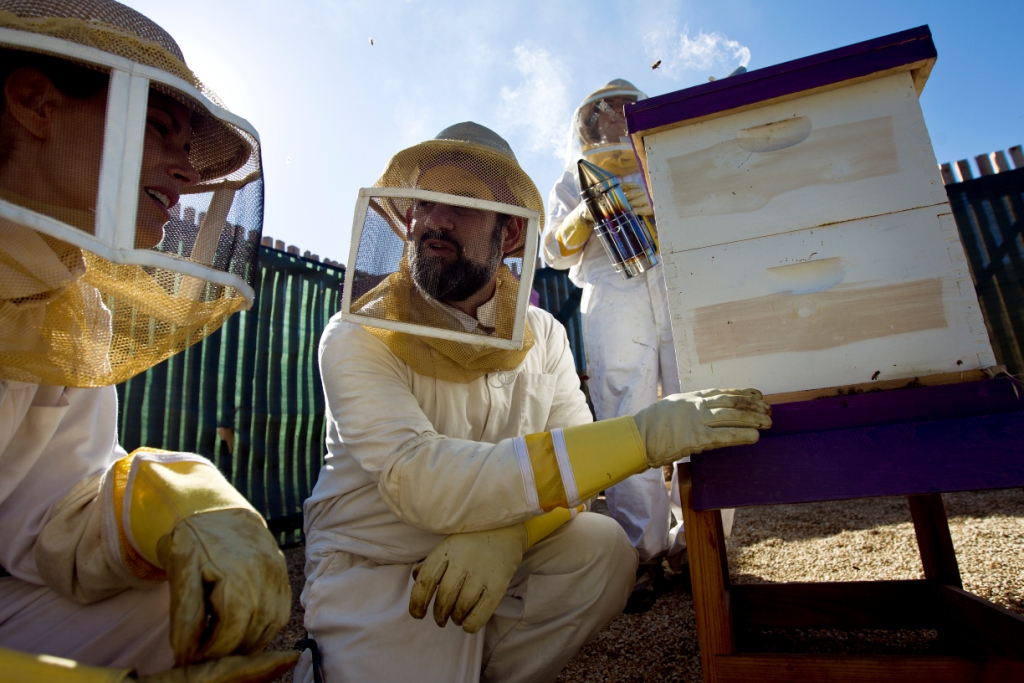 By the time the bee tourists are zipping into beekeepers’ signature white full-body suits and donning hats, gloves, and netting, they’re well aware of worker bees’ tasks, their physical features, the reasons they have “zero biological imperative to sting you,” and how a queen becomes a queen (a self-selecting process through which one bee per hive gains her “superpowers,” as Ride puts it, from a lifetime of consuming nutrient-rich royal jelly rather than honey). Most importantly, they’ve gained a sense of just how critical bees are to our ecosystem. Once the group steps through a protective gate and into the buzzing apiary, there are few of the expressions of fear or panic one might expect, but rather, signs of an oddly peaceful adrenaline rush—marked by oohs and aahs over bee larvae, the geometrically byzantine honeycombs, and beekeepers’ smokers, which as Ride explains, are used to emulate forest fires. “The smoke makes the bees retreat further into the hive to gorge on honey—because they don’t know when they’ll get to eat again after getting out of dodge—and creates an opportunity for the beekeeper to open the hive and work while the colony’s defensive response is interrupted.”
By the time the bee tourists are zipping into beekeepers’ signature white full-body suits and donning hats, gloves, and netting, they’re well aware of worker bees’ tasks, their physical features, the reasons they have “zero biological imperative to sting you,” and how a queen becomes a queen (a self-selecting process through which one bee per hive gains her “superpowers,” as Ride puts it, from a lifetime of consuming nutrient-rich royal jelly rather than honey). Most importantly, they’ve gained a sense of just how critical bees are to our ecosystem. Once the group steps through a protective gate and into the buzzing apiary, there are few of the expressions of fear or panic one might expect, but rather, signs of an oddly peaceful adrenaline rush—marked by oohs and aahs over bee larvae, the geometrically byzantine honeycombs, and beekeepers’ smokers, which as Ride explains, are used to emulate forest fires. “The smoke makes the bees retreat further into the hive to gorge on honey—because they don’t know when they’ll get to eat again after getting out of dodge—and creates an opportunity for the beekeeper to open the hive and work while the colony’s defensive response is interrupted.”
Russo says that by the end of the tour, most guests—many of whom get to help harvest honey from the hive—are “floored by bees’ sophistication and complexity.” He adds, “Most people kinda take them for granted and have little knowledge about how there’s this elusive queen in there, with all these intricate structures. I’d say less than 20 percent of schools around here cover bees anymore, and we get a lot of people who are initially afraid—because we don’t necessarily want to think of nature as this powerful thing that can lash out at us.”
Being in a hive helps many guests confront these primal fears. “I’m not a psychologist, but it seems to me that when people can’t control something, they don’t trust it,” says Russo. “We live under this illusion that everything’s under control and that we’re safe, but the reality is that nature can strike you down at any time—via earthquakes, flooding, wild animals, or what have you. But whereas there’s the sense you could outrun and hide from those things, bees are like this intangible cloud that you imagine attacking you like thousands of little flying rattlesnakes.” It’s why Russo and Ride spend time during each tour assuring guests that for bees, dispatching one’s stinger is a self-destructive mechanism. “The other thing I tell them is that we don’t tie them to a stake and release the bees or something—they’re always under complete autonomous control. Unlike a roller coaster, nature doesn’t often strap you into a car you can’t get out of.” Russo says it doesn’t seem to take guests long to realize that bees are “completely focused on the activities they need to do for survival,” and that “going around terrorizing people just isn’t one of those things.”
Not surprisingly, Russo, who’s been described as a “bee evangelist,” frequently receives emails from satisfied guests explaining that they afterward started their own hives. “Oftentimes, there’s one member of a family or couple who’s resistant to the idea of keeping bees, so loved ones will use the tour to sell them on it—it gets people over the hump,” he says. Occasionally, an overwhelmed recent convert will write with questions about the intricate work of helping these non-corral-able insects to thrive. “I tell them it’s kind of like painting,” says the ever-philosophical Russo. “Anyone can buy a canvas and splash some paint on it and it might look nice, but every year, you’re going to get better at beekeeping—you’ll never be perfect, and there’ll always be more you can learn, but setting up that hive and making some mistakes is how you’ll eventually become a master.”
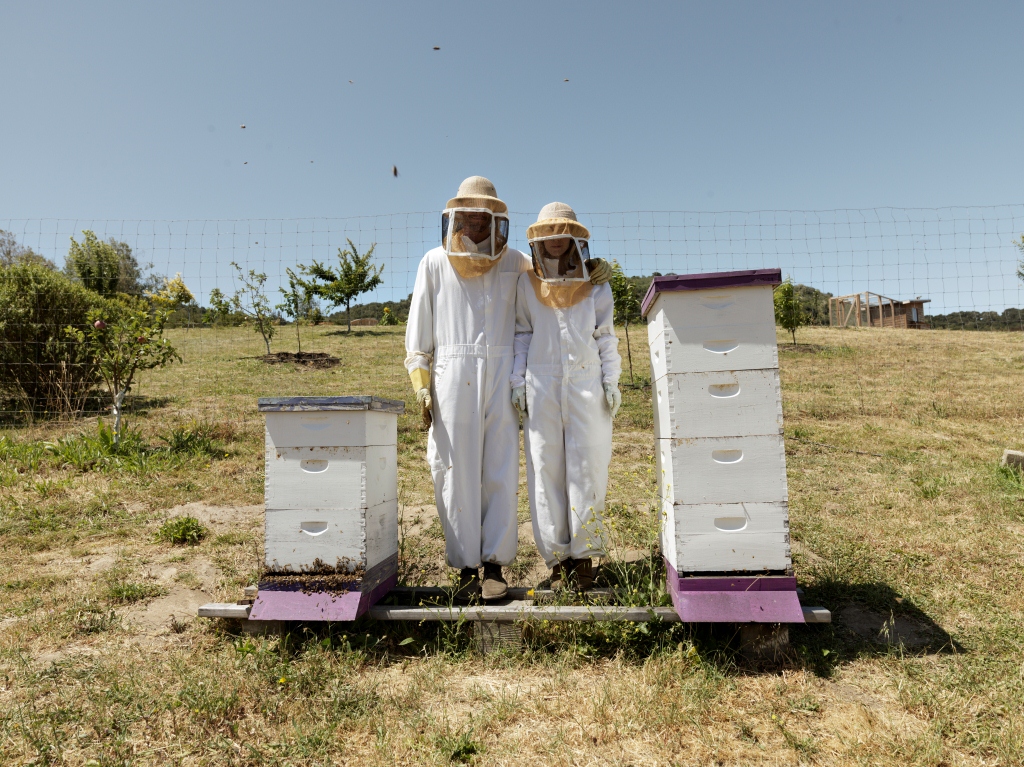 Of course, beekeeping suits, smokers, and masks aren’t for everyone; nor is figuring out bees’ personalities. “Some are genial, some surly,” Russo says, adding, “like with people, you learn to work with individual temperaments.” But still, once they learn more about Colony Collapse and bees’ important work, most of Russo’s tourists want to know what they can do to help bees. And the answer is simple: “We always finish a tour by explaining that the best thing you can do for bees is to plant a garden and not use pesticides,” Russo says. “Create a lovely and hospitable place for them.”
Of course, beekeeping suits, smokers, and masks aren’t for everyone; nor is figuring out bees’ personalities. “Some are genial, some surly,” Russo says, adding, “like with people, you learn to work with individual temperaments.” But still, once they learn more about Colony Collapse and bees’ important work, most of Russo’s tourists want to know what they can do to help bees. And the answer is simple: “We always finish a tour by explaining that the best thing you can do for bees is to plant a garden and not use pesticides,” Russo says. “Create a lovely and hospitable place for them.”
 The Magazine of The Sierra Club
The Magazine of The Sierra Club

